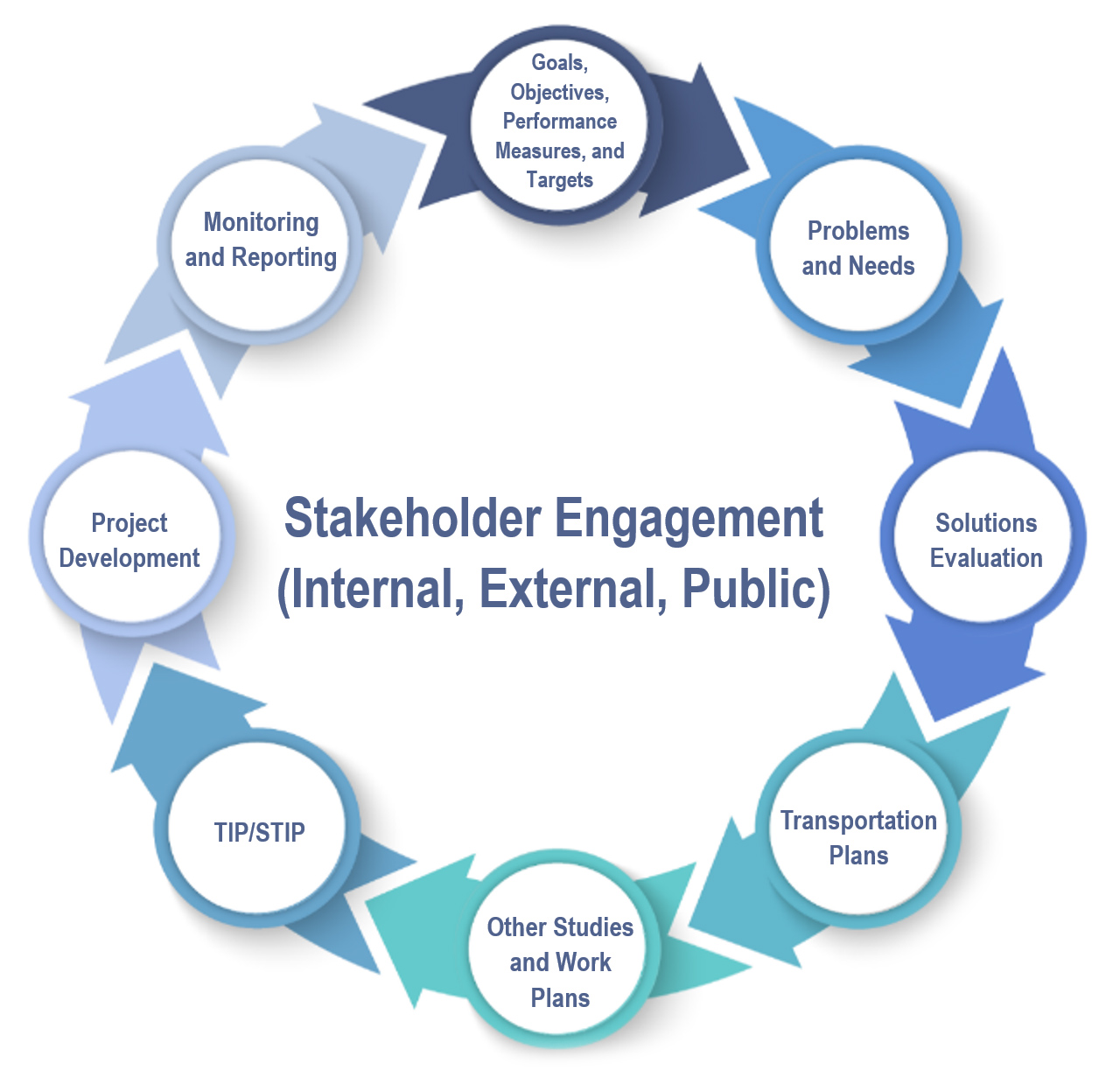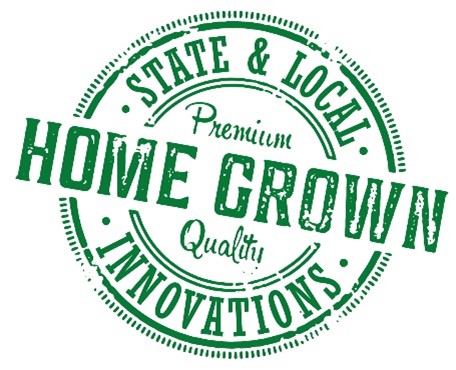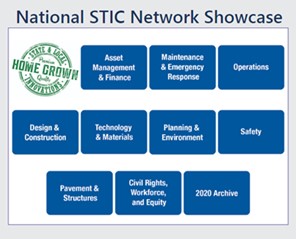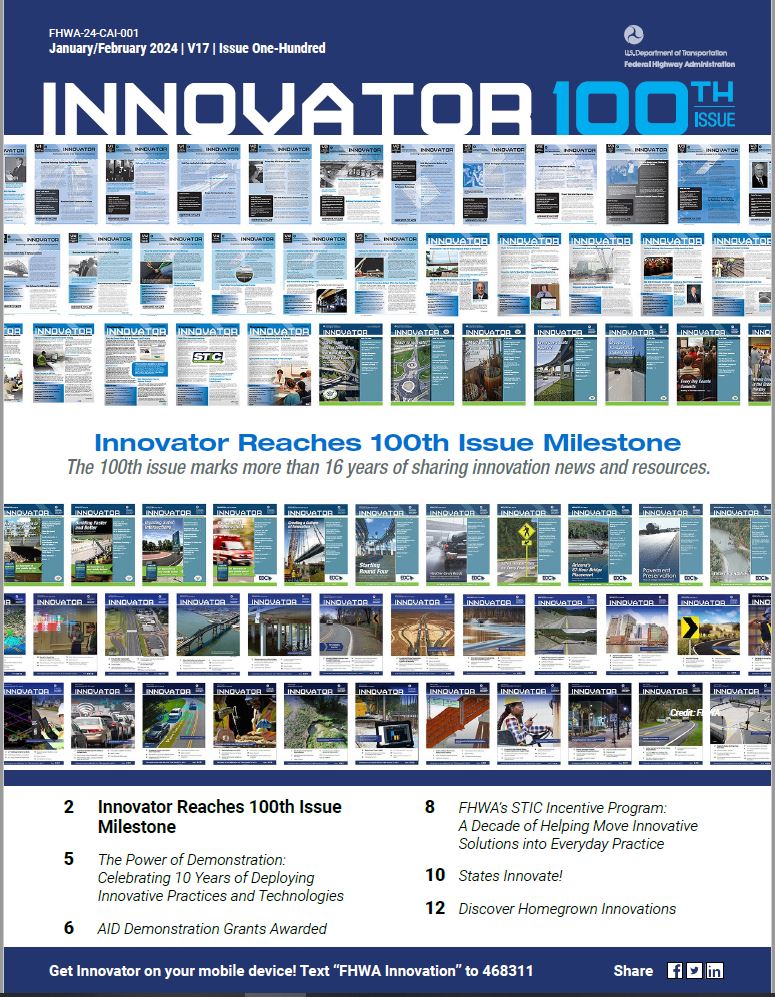January 25, 2024
Innovation of the Month: Integrating GHG Assessment and Reduction Targets in Transportation Planning
State Transportation Improvement Plan (STIP) or Transportation Improvement Program (TIP) project selection and prioritization are important ways transportation organizations can incorporate greenhouse gas (GHG) criteria into transportation planning. Agencies can require proposed projects to describe anticipated impacts to GHG emissions, either quantitatively or qualitatively. This criteria requirement can help agencies select or prioritize individual projects and evaluate the STIP or TIP as a whole on its anticipated impacts on emissions.

Step one of the transportation planning process- goals, objectives, performance measures, and targets- is animportant step to integrate GHG considerations into. (Credit: FHWA)
The Virginia Department of Transportation's Smart Scale process funds capacity enhancing transportation projects using a quantitative scoring method. Projects are subject to two environmental measures, one of which is the "potential of the project to improve air quality and reduce greenhouse gas emissions." The environmental criteria are 10 percent of a project's total score.
The Massachusetts Department of Transportation (MassDOT) developed spreadsheets for MPOs to estimate the CO2 impacts of quantifiable projects, and projects are categorized by their impact on GHG emissions. Each categorized project undergoes a quantitative analysis if they are not already included in the Regional Transportation Plan.
In Georgia, the Atlanta Regional Commission (ARC) includes a metric for "change in GHG emissions" for scoring most projects (including roadway capacity) as part of its TIP project prioritization process. ARC calculates project emissions through both its regional travel demand modeling process and using off-model techniques, comparing regional emissions from a build and no-build scenario, depending on the project type.
Transportation agencies may also fund projects through discretionary programs or grants. Including GHG emissions requirements into these project selection criteria as well will help ensure that all projects are considered for their impacts on GHG emissions.
To learn more about Integrating GHG Assessment and Reduction Targets in Transportation Planning, contact David D'Onofrio, FHWA Office of Natural Environment, or Jim Thorne, FHWA Office of Planning, or subscribe to the team's e-newsletter, or visit the initiative's website.
South Dakota DOT Improves Safety and Efficiency with e-Ticketing
When the South Dakota Department of Transportation (SDDOT) initially approached the contracting community to consider the adoption of e-Ticketing, a partnership began that piloted and evolved the innovation on projects. Working together, SDDOT and its contracting partners proved that a wireless fleet management system and electronic ticket capture software system could work together to generate and transmit weight tickets as well as track trucks during transport and record the point of placement of the hot-mixasphalt (HMA) on a project.
With the development and adoption of a new e-Ticketing Supplemental Specification, SDDOT contractors have an option of providing printed tickets or e-Tickets at no additional cost to the contract.
SDDOT has identified e-Ticketing benefits including improved work zone safety, since the person collecting tickets does not have to be on the road, and time savings by personnel tracking and totaling tonnage electronically.
To learn more about SDDOT accelerated deployment of e-Ticketing, please contact Damon Zeltinger, SDDOT Construction Administrator. If you would like to learn more about or participate in FHWA efforts in deploying e-Ticketing please contact Kat Weisner, FHWA Construction and Contracts Administration Engineer.
Discover Home-Grown Innovations from Around the Country

Are you interested in homegrown innovations being used by your peers in other parts of the country? Check out the National STIC Network Showcase, a component of the EDC-7 Virtual Summit. Registering for the event allows you to access all the content through February 2024. The Showcase features several innovations around pavements.

Learn about the Washington State Department of Transportation's Innovative Design Technology for Ultra Long Span Precast, Prestressed Concrete Bridge Girders, which couples advanced design methodology with state-of-the-art software to reduce project cost and improve on-site safety.
Celebrate the ingenuity of your peers and read about these innovations—developed and deployed in-house at transportation agencies nationwide. Additionally, we invite you to watch the one-hour presentations on-demand that feature many of these and other innovations.
Don't miss the 100th Issue of Innovator
The January/February issue of Innovator is now available, accessible from your computer, tablet, or mobile phone to optimize your reading experience!
In this issue:
- Innovator Reaches 100th Issue Milestone
- The Power of Demonstration: Celebrating 10 Years of Deploying Innovative Practices and Technologies
- AID Demonstration Grants Awarded
- FHWA's STIC Incentive Program: A Decade of Helping Move Innovative Solutions into Everyday Practice
- And more...
Comments? Questions? We'd love your feedback! Drop us a line and let us know what you think.
Read past issues and sign up to receive Innovator by email here, or text "FHWA Innovation" to 468311 to get Innovator on your smartphone.
Stay Up to Date on the EDC Innovations That Interest You Most

EDC teams are always on the move! If you blink, you could miss out on important webinars, case studies, tools, videos, and more. To never miss information for the EDC innovations that interest you most, visit the subscription page and select the topics you’d like to receive updates on directly from the teams that coordinate them.
Recent bulletins:
Local Aid Support 1/18/24
Unmanned Aerial Systems 1/17/24
Innovation in Project Delivery 1/8/24
NextGen TIM 1/4/2024
Upcoming Events
Innovation in Project Delivery, From Hard Hats to Safety Helmets
January 29, 2024, 3:30-4:30pm ET Register
About EDC
Every Day Counts, a State-based initiative of the Federal Highway Administration's Office of Innovation and Workforce Solutions, works with State, local, and privatesector partners to encourage the adoption of proven and underutilized technologies to deliver transportation projects more efficiently, enhance safety forall users, support a sustainable and resilient infrastructure, and incorporate equity inproject planning and delivery.
EDC News is a weekly publication highlighting successful EDC innovation deployments across the country.
EDC News is published weekly by the FHWA Center for Accelerating Innovation.
Disclaimer:The U.S. Government does not endorse products or manufacturers. Trademarks or manufacturers' names appear in this document only because they are considered essential to the objective of the document. They are included for informational purposes only and are not intended to reflect a preference, approval, or endorsement of any one product or entity.
Except for the statutes and regulations cited, the contents of this document do not have the force and effect of law and are not meant to bind the States or the public in any way. This document is intended only to provide information regarding existing requirements under the law or agency policies.
Recommended Citation:
U.S Department of Transportation, Federal Highway Administration
EDC News; January 25, 2024
Washington, DC




